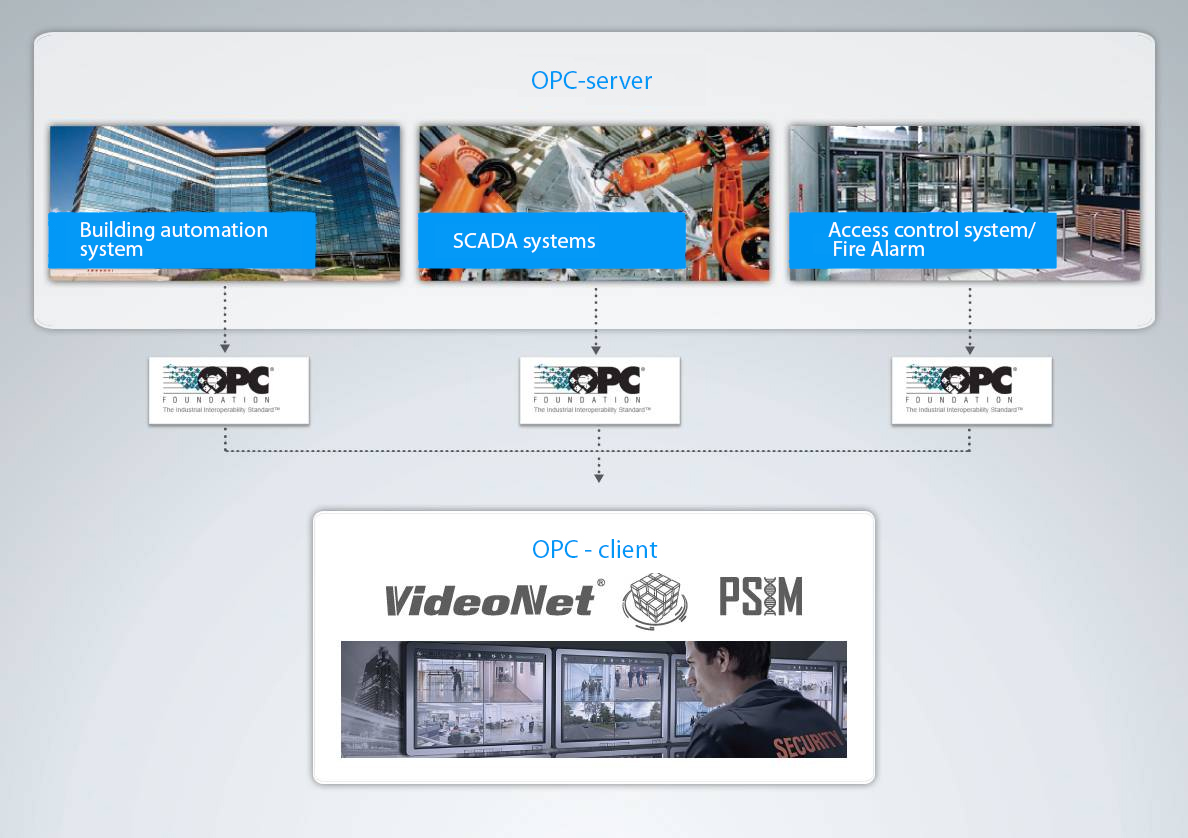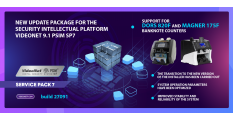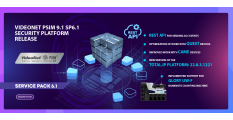When it comes to integration, we assume interoperability of different software products with each other. Different software can communicate and share data, but they need a common language. And this language must be supported by all software products to be integrated.
Therefore, specifications and standards are developed to provide integration capability for specific application. For example, ONVIF is one of the most widely known authorities that develop standardized communication protocols for various hardware and software products used in security systems, e.g., IP-cameras and DVRs.
The main goal of OPC standard is to ensure interoperability of automation systems from various manufacturers that use different hardware platforms. Before OPC standard was developed, each new equipment required an individually adapted software. It was expensive and complex to support automation systems. Motto of OPC Foundation is «Open communications over open protocols».
Standardization allows to connect any physical device to any automation software if it supports OPC standard. Software development costs were significantly reduced and customers can select equipment and programs without the previous compatibility limitations.
What is OPC
OPC is a family of software technologies providing a single interface for automation and process management. The most widely used standard is OPC DA (Data Access) that ensures data exchange between various process equipment. When anyone mention OPC standard, in most cases he/she assumes OPC DA.
Real time monitoring and response

OPC DA standard support is an important step in the development of the VideoNet PSIM concept and now you can integrate security system with process and engineering systems on a single enterprise-wide management platform. With VideoNet you can organize interaction with Rubezh intrusion detection and fire alarm system, Honeywell EBI R500 (Enterprise Buildings Integrator), Siemens, Schneider-Electric and other systems supporting OPC protocol.
This allows to create common information environment, improve management efficiency and reduce operational costs. Operator or automatic central processing can receive data from all systems in real time. This significantly improves quality of decision-making by the supervision departments of the enterprise.
For example, OPC DA protocol can be used for communication and interaction with YOKOGAWA solutions, one of the leaders on the process and production management solutions market. YOKOGAWA solutions are used by enterprises belonging to various industries: oil & gas, chemical, energy. The YOKOGAWA CENTUM system offers continuous control capability for any process, including most specific ones. The interaction between CENTRUM system and VideoNet security platform delivers advantages, including security equipment integration and management on a single VideoNet PSIM platform. With native support of OPC DataAccess 2.0 specification, Total.SCADA platform allows to create a single monitoring and management center for any enterprise.
VideoNet offers an effective way to integrate security system with different processes and to ensure centralized monitoring, fast response and management of the entire security system at your site.
Interaction options offered by VideoNet
Integration of various systems on the VideoNet platform using OPC protocol can be considered as one of the possible options. This is integration at the software level. VideoNet solution refers to a PSIM class platform, so it can provide complete and deep interaction between all systems. You can connect the access control system and intrusion detection & fire alarm system directly to the platform. VideoNet manages all subsystem operation, for example, video surveillance, access control, intrusion detection & fire alarm, perimeter protection (and each individual device of these subsystems) in a single software interface. This option gives a "big picture" of situation on site and delivers maximum advantage from tight interaction of different security systems.






